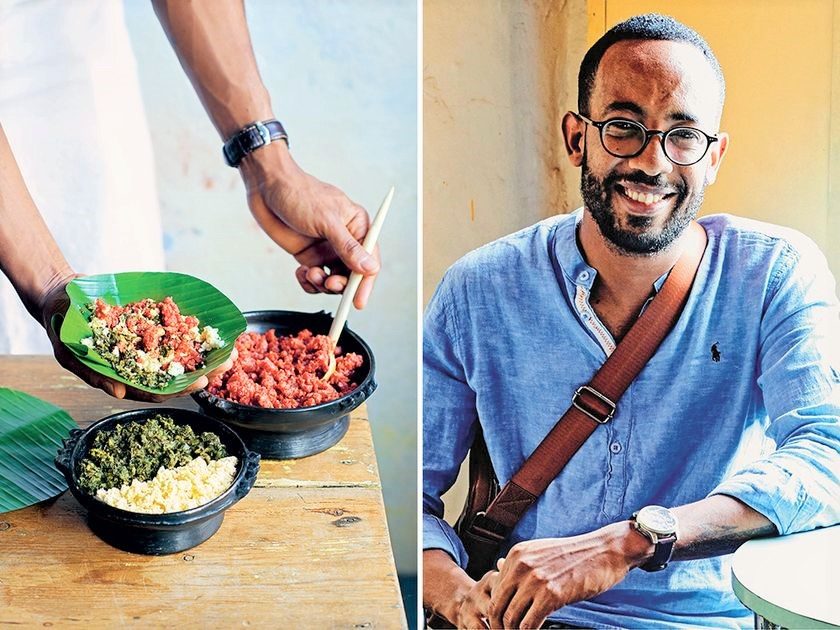3,000 years of culinary tradition: In Ethiopia, chef Yohanis Gebreyesus taps into ancient practices and modern interpretations

‘What’s so fascinating about having such geography, such climate, is that for people to survive in specific areas they needed to adapt’
Our cookbook of the week is Ethiopia: Recipes and Traditions from the Horn of Africa by Addis Ababa-based chef Yohanis Gebreyesus. To try a recipe from the book, check out: Traditional injera (sourdough flatbread), gomen (collard greens with onions and fresh ginger) and kitfo (steak tartare with spiced clarified butter).
Injera — the teff-based sourdough flatbread defined by its legion of tiny, spiralling eyes — forms the very foundation of most Ethiopian meals. “We don’t even say ‘our daily bread’ in Ethiopia; in our prayers, we say ‘our daily injera.’ That’s how important it is,” says chef Yohanis Gebreyesus.
The East African nation’s most farmed crop, protein- and mineral-rich teff is especially important in the highlands. But in Lalibela — the mountainous Ethiopian region famed for its impressive assemblage of medieval rock-hewn churches — a captivating bread-making practice took root. In order to produce an injera-like flatbread using locally available oat flour, cooks came up with a creative custom.
Read more at: The Kingston Whig



